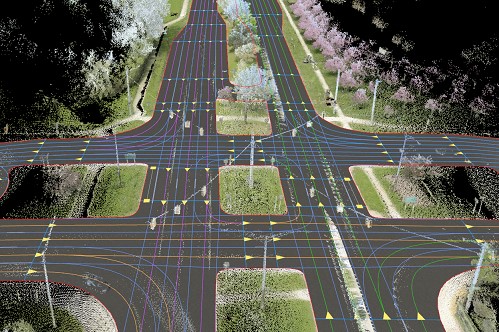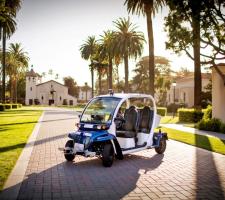
Bob Denaro looks beyond the hype surrounding autonomous vehicles to the challenges that still need to be overcome.
Automated vehicles (AVs) may be the perfect storm – in a positive way - with the automobile manufacturers, the government and consumers all embracing the emergence of a transformational new technology and product. The automotive companies see AVs as a way to increase the safety and convenience of their vehicles while governments look to the technology to increase safety, reduce congestion and enhance mobility for their constituents. And consumers just think AVs are ‘cool’.
With such low impedance the development, testing and deployment of AVs are proceeding at a breathtaking pace.
The media carry articles about the utopian state when robotic cars take us, our parents, kids and dogs anywhere we want to go with flawless execution, efficient roads and clean air. At some point in the distant future that could be reality but there are many speed bumps ahead in the road for vehicle automation. The question is sorting out the reality from the myth. Let’s take a look at some of the challenges for AVs.
Sensing the environment
With half a billion years of evolution, eyeballs are remarkable stereo vision instruments and replicating their performance with sensors has, so far, resulted in disappointment. Our eyes have a wide spectrum performance in all conditions - far superior to that of cameras, radars or lidar, and software perception is still in its infancy. Humans can discern another driver’s attention or even intention by making eye contact and distinguish a mylar balloon blowing across the road from a solid object.
While the multi-spectrum nature of vehicle sensors may eventually exceed the human eye’s performance, and deep learning data analysis software is rapidly gaining the capability to detect and identify objects, in the short term these technologies face significant challenges, including cost. The successful operation of AVs in all environments and environmental conditions may take some time.
Currently ethics, laws, regulations and insurance all interact to govern how we drive vehicles and replicating or replacing these tenets for AVs will be complicated. For instance, can an AV exceed the speed limit when entering a highway or overtaking another vehicle, or cross solid double lines in the road to avoid a parked car or obstacle? And pick your favourite variation on the trolley problem – hit another vehicle or mow down a bus queue?
If a driverless vehicle crashes, who is liable: the vehicle’s operator or its manufacturer? Legislators are still pondering this but the insurance companies appear to be preparing for the vehicle manufacturer to assume such liability and some auto manufacturers have stated their intent to do so. And will the first lawsuit be for an AV causing a crash or for failing to avoid one?
There are many opinions on potential solutions but there is a good chance that these issues will be impediments to the otherwise rapid emergence of AVs.
Operating environments
We can all appreciate using AV mode in traffic congestion, on long highway journeys or when parallel parking and therefore the incremental cost of an AV can be justified. But the business case for developing automation for more complex scenarios, such as automatically driving through city streets, may not be justified by the incremental value.
We may see small, lightweight, low speed vehicles like the Google car or the Auro Robotics car operating in restricted environments to provide transportation for people with otherwise restricted mobility. As experts have noted, automated driving will have something everywhere and everything somewhere, but not for a long time everything everywhere.
Digital transportation infrastructure
The very definition of the digital transportation infrastructure (DTI) has to be different for AVs - much more accurate and precise, free of errors and continuously updated to reflect changes. That means we can’t separate the ‘map’ from the connectivity that updates that map. And with that connectivity comes the need for cybersecurity and ensuring driverless vehicles cannot be commandeered for malicious purposes.
Currently it is a challenge to achieve widespread geodetic accuracy and currency of maps but digital mapping is a convergent solution; at some point, we will know where all of the roads are with certainty and near absolute accuracy.
Those superior maps can then be married with improved satellite positioning of the vehicle to create a backup system to the onboard sensors for localising the AV on the road. This dissimilar redundancy, having a backup system dependent on totally different technology, is a highly desirable solution for achieving vehicle fault tolerance capability so essential to successful AV deployments. And with a constant flow of probe data from the large number of vehicles transiting those roads, we should be able to detect changes and communicate updates with high reliability and low latency. This is DTI v2.0.
Having determined the absolute ground truth it is then possible to calculate the speed at which to take a curve to achieve, say, 0.3g lateral acceleration which is comfortable for the occupants. That’s fine on a multilane highway but on a dark, rainy night travelling down a narrow, hilly, tree-lined, two-lane road, passengers will be reaching for the grab handles. And how passengers will react to AV’s travelling close together at speed – both in front and to the side – has yet to be determined.
In reality AVs will need to drive like humans – and maybe in different styles to suit the passengers because public acceptance will depend on AVs having sufficient data about the roads and individual preferences to not scare the occupants. This ‘humanisation’ of the digital representation of the road network is also DTI v2.0.
Some auto manufacturers believe that stored maps are not required as an AV can gather sensor data on the move and position itself on the roadway and store the data to make its own map. Doing so is definitely a desirable element of DTI v 2.0 – but potentially risky for the AV to be ignorant about incidents ahead, sharp turns, school zones, speed limit changes… the list goes on. A better solution is a combination of these two approaches.
Human-centred design
Beyond humanising the DTI, AVs will need control strategies that are both comfortable to humans and maintain the efficiency of the transportation network. But sometimes it is necessary to drive a little aggressively – for instance nosing out into traffic and hoping that a gracious driver will ease off and let you in. The recent events with Google’s self-driving car shows that this particular problem has yet to be solved. On the other hand if AVs are unfailingly timid and infinitely patient, we may bring the traffic network to a halt.
The need for human-centred design is vital because trust in technology is important and the current enthusiasm for AVs will quickly erode if they operate in an uncomfortable or unfamiliar way. Delegates to the 2014 Automated Vehicles Symposium cited 2030 as the average year in which fully automated vehicles might be on the road. But when asked when they would be able to trust an AV to take their grade-school child or grandchild to school, a significant number of responders pushed that date to 2040 or beyond.
Human-centred design also applies to those outside the vehicle. It is difficult to imagine how pedestrians and AVs will interact in a busy city. Taxi drivers in New York may actually provide a beneficial traffic flow service when they nudge into cross walks hurrying the pedestrians out of the way. How will this work with automated and perhaps driverless cars?
Will pedestrians step in front of such vehicles because they know that they’re programmed to not hit them? Future issues and unintended consequences like this are as yet poorly understood.
The enthusiastic support from the automobile industry, suppliers, governments and legal authorities, plus the market pull from consumers, should ensure we overcome these challenges and that automated vehicles bring about the biggest change to the transportation eco-system in more than 100 years. But just as the early 20th century had a chaotic mix of horses and cars sharing roadways, there will be setbacks as we mix AVs and conventional vehicles over the next couple of decades. Our infrastructure, laws and attitudes will have to evolve as much as the technology, and business models must adapt as we embrace the sharing economy, electrification and intensified environmental concerns.
But however challenging it will be to reach our vision for completely transformed transportation and mobility, the benefits and rewards are worth the effort.
- ABOUT THE AUTHOR: Bob Denaro is an ITS consultant, an advisor at Motus Ventures and member of the USDOT's ITS program Advisory Committee and chairs the TRB's Joint Subcommittee on Challenges and Opportunities for road vehicle automation













